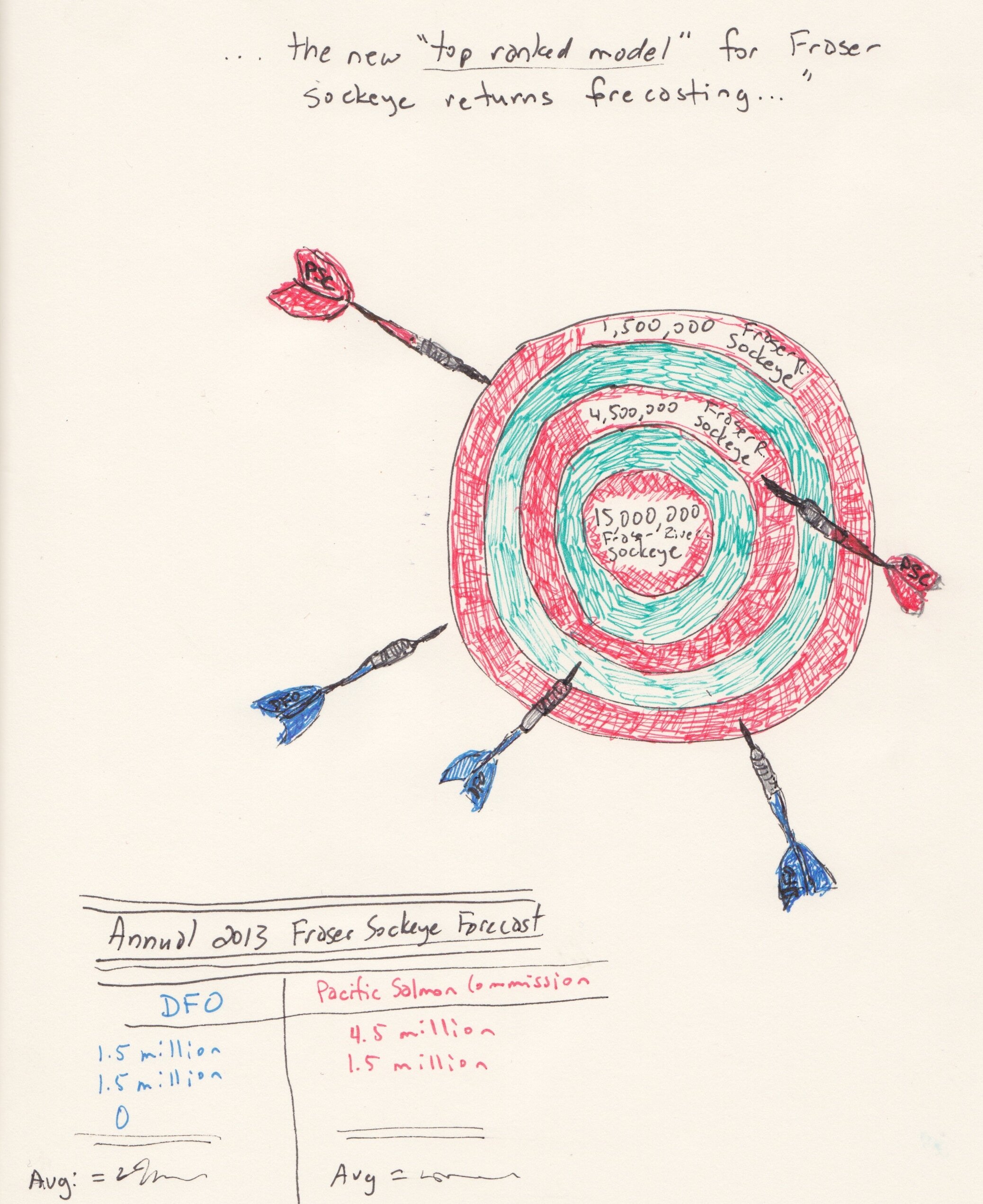
2013 Fraser River salmon forecasting
Another year of wild salmon returns being prognosticated by the Department of Fisheries and Oceans (DFO) and Pacific Salmon Commission (PSC) – another year of wildly variable predictions ranging from the one in ten chance (10%) probability through to the 9 in 10 chance (90% probability).
But… one has to read these carefully, as DFO as adopted their own unique probability language – it sort of reeks of used car salesman language (no offence to those in this line of business).
This year the Fraser River sockeye forecast in fisheries science speak is a one in ten chance (10% probability) of a return “at or below 1,554,000” Fraser sockeye — and a nine in ten chance (90% probability) of a return “at or below 15,608,000″ Fraser sockeye”.
Hmmm… nothing like being able to report back in some ten years on some “best practices” or “benchmarking” report: “Look, we were 90% accurate in our forecasts because nine out of ten years the actual salmon return was always under the 90% probability prediction…”
Now the curious thing is that DFO goes with the 50% probability forecast (1 in 2 chance), which is this year at 4,765,000 Fraser sockeye — to “manage” the various fisheries. So, again, in fisheries science speak that is a 1 in 2 chance that the run will be “at or below” that level.
Missing from these forecasts is the 0% chance and 100% chance – but instead of 100% chance representing a ‘guarantee’ it’s sort of in reverse. There is a 100% chance that the run will never get this high… oh, but wait, we don’t deal in 100% probabilities when we’re dealing with nature… ummm… because it is ‘un-predictable’…
Even says so in DFO’s own documents – including this years 2013 forecasts documents:

From the: “PRE-SEASON RUN SIZE FORECASTS FOR FRASER RIVER SOCKEYE AND PINK SALMON IN 2013
So, apparently we can’t “quantitatively” or “qualitatively” factor in, or accurately capture environmental variables… And we are surprised that we can’t capture variability or reduce uncertainty?
Thus we use “random variability” in our forecasts…?
“Stochastic”… which the etymology (roots) of this word capture the meaning well…
“pertaining to conjecture,” from Greek stokhastikos “able to guess, conjecturing,” from stokhazesthai “guess,” from stokhos “a guess, aim, target, mark,” literally “pointed stick set up for archers to shoot at”
Or… maybe a dart board in which to place ‘predictions’ and start throwing away… and hence the opening illustration. Which also represents the new “top ranked models”…
_ _ _ _ _ _ _
Mis-guided probabilities aside…
Where are the variety of $20+ million Cohen Commission recommendations?
Several had a deadline of March 31, 2013 – and remain at a 0% probability of ever being implemented – or wait, is that supposed to be 100% probability that the level of implementation will remain “at or below” the current level of implementation…(?)
…if we are to use fisheries forecasting-speak….
But then at least it seems money that went into the Commission can just get piggybacked onto the “Canada’s Economic Action Plan” initiative – it was a great job and contract creation project for several years.
And well, it kept a variety of journalists going, and even this blog… but oh where, oh where has the interest in Fraser sockeye gone…?




